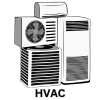Yes — removing trailer efficiency technologies generally reduces fuel economy, especially for long-haul heavy-duty trucks where trailers contribute most of the aerodynamic drag.
In this article:
Why Trailer Technologies Matter
- At highway speeds (55–70 mph / 90–110 km/h), aerodynamic drag accounts for up to 65% of total fuel use in tractor-trailers.
- The trailer (not the tractor) makes up the largest share of that drag (flat rear end, sharp edges, underbody turbulence).
- Trailer efficiency devices reduce drag, which lowers the amount of engine power — and therefore fuel — needed to maintain speed.
Common Trailer Fuel-Saving Technologies
- Side Skirts → Reduce airflow under the trailer → 4–7% fuel savings.
- Boat Tails / Rear Fairings → Streamline the wake behind the trailer → 3–5% savings.
- Trailer Gap Reducers / Nose Cones → Cut turbulence between tractor and trailer → 2–3% savings.
- Wheel Covers & Fairings → Minimize turbulence around wheels → 1–2% savings.
- Low-Rolling-Resistance Tires → Reduce tire drag → 2–4% savings.
When combined, these technologies can deliver up to 10–15% fuel economy improvement in real-world long-haul use.
What Happens If They’re Removed?
- Fuel economy decreases because drag increases → engine must burn more fuel to maintain cruising speed.
- CO₂ and operating costs rise: For a typical long-haul truck traveling 100,000+ miles per year, losing 10% efficiency could mean 1,500–2,000 extra gallons of diesel burned annually.
- Compliance risk: In regions like the U.S. (California CARB) and the EU, efficiency standards mandate trailer aerodynamics and low-resistance tires. Removing them could make a fleet non-compliant.
Summary:
Yes — removing trailer technologies directly reduces fuel economy and increases costs. For long-haul fleets, trailer devices are among the cheapest and most effective fuel-saving measures available.
Other courses:



